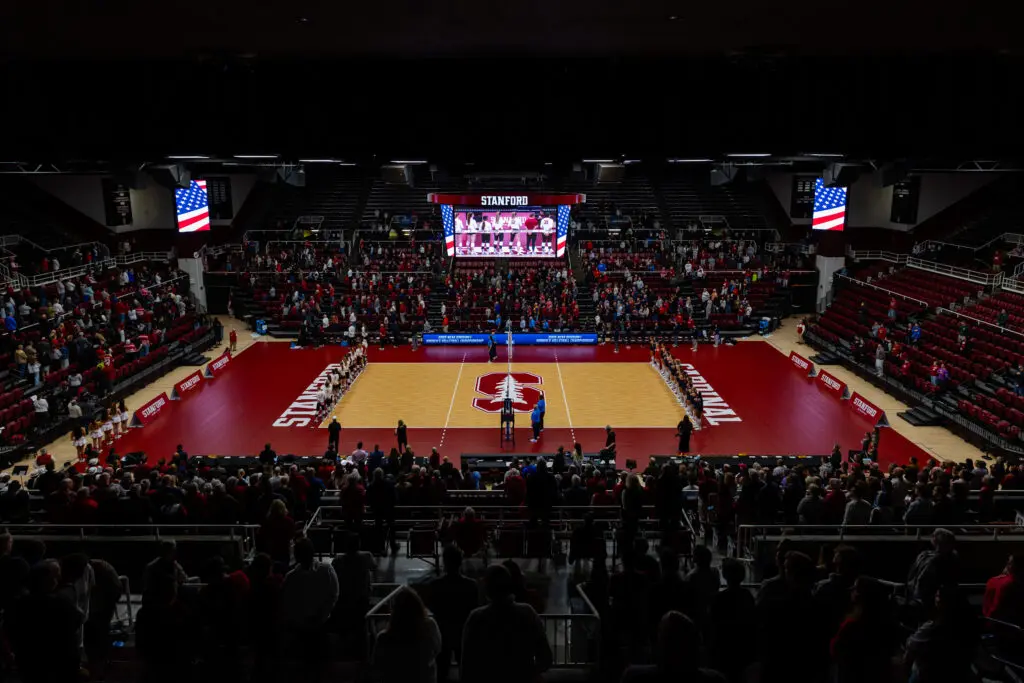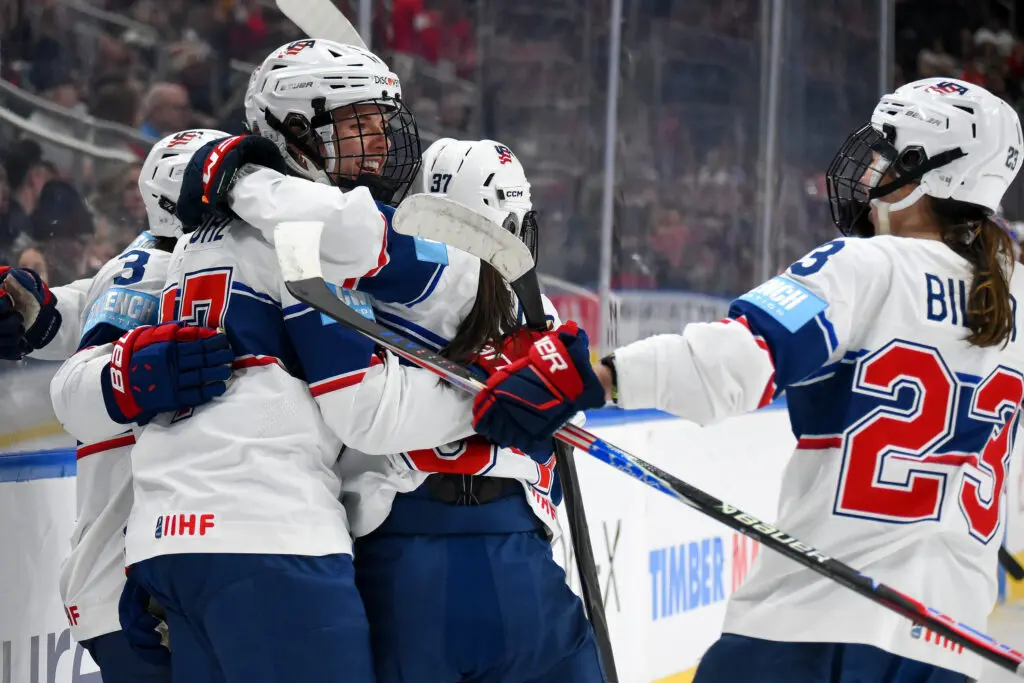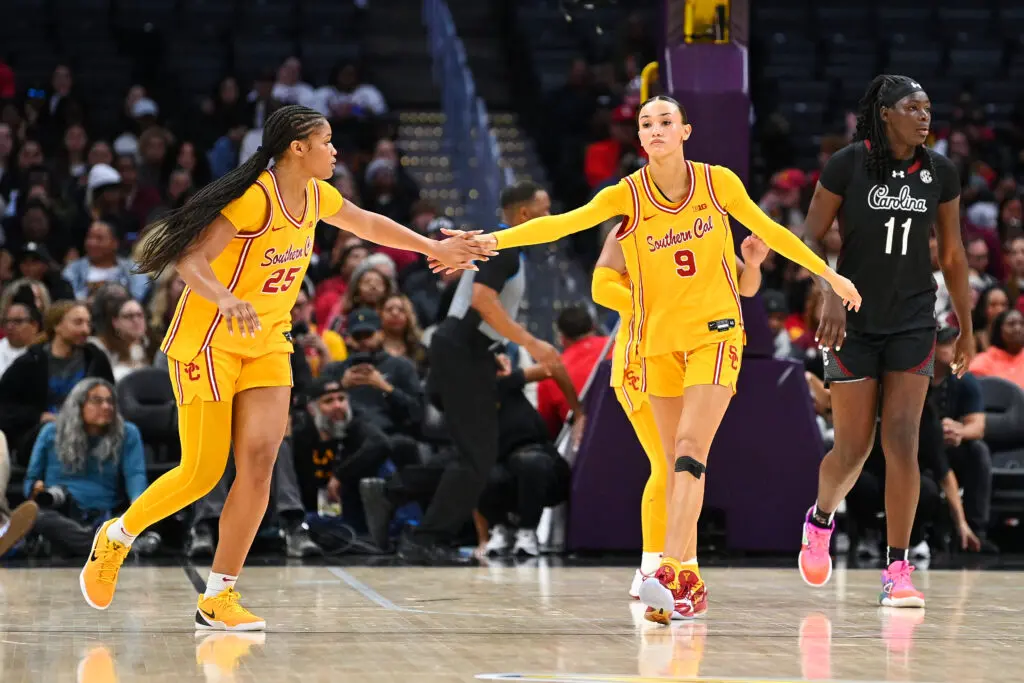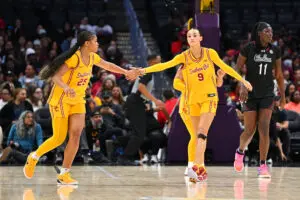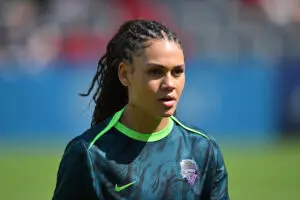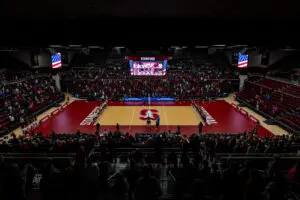In September 2018, the World Surf League proudly announced that it would be awarding equal prize money to male and female surfers at all of its events moving forward. A few months later, Stephanie Gilmore earned her seventh World Title in the sport, tying her with Layne Beachley for the most women’s World Titles ever. Given her iconic status in the sport at the time of the equal pay announcement, she became a prominent face in the fight for pay equity.
Though Gilmore had been vocally calling for this change, she deflects ample credit to her predecessors like Beachley who fought for years for the right to compete against an entrenched sexism in surfing culture.
In a recent conversation on the Just Women’s Sports podcast with host Kelley O’Hara, who herself knows something about the fight for equal pay, Gilmore explains why she’s so proud of her “rebel” sport while discussing how she hopes to continue the fight.
We are pleased to announce that from 2019, equal prize money will be awarded to male and female athletes across all WSL controlled events. The WSL is proud to be the first American-based global sports league to offer gender pay equality. #CatchThisWave pic.twitter.com/y8cY8nlTc8
— World Surf League (@wsl) September 5, 2018
When Gilmore exploded onto the pro surf scene in 2007, winning the World Title her rookie season, prize money was still glaringly off-kilter. It was typical for her to earn $10K for first place in a single contest while her male counterpart earned $40-$50K. Even in 2018, just months before the WSL’s equal prize money announcement, Gilmore earned $65K for first place at the Rip Curl Pro while the male winner got $100K.
When pay equity in sport started gaining mainstream coverage in the late 2010s, it might have been tempting for surfing to stay in the margins as an alternative sport. One reason that didn’t happen is because their podium celebrations made them an easy target, with winners holding up large checks announcing exactly how much they each earned. And at junior surf events, this practice includes a photo op of the male and female winners standing shoulder to shoulder holding their giant (and lopsided) award checks. Proponents of equal pay helped one such image go viral:
"Rio Waida and Zoe Steyn Take Titles at Billabong Junior Series" https://t.co/GdLn7etanO#BillabongJNR #TheBallitoPro pic.twitter.com/SEK6cnfalq
— The Ballito Pro (@TheBallitoPro) June 24, 2018
Gilmore has an album’s worth of photos just like this. But in the zeitgeist of 2018, this blatant display of gendered pay disparity didn’t sit well with the public. (If only such outcry was customary practice across the world of sports.)
There are those in the surfing community who think the WSL’s equal prize money announcement was an opportunistic reaction to outside pressure, but Gilmore is more generous in her assessment. She credits the relatively new owners of the WSL with having a progressive vision for the sport and points out that they could’ve easily limited the equal prize money requirement to its top-level events where media attention is primarily focused. This is the current status in tennis, for example: only the four Grand Slams offer equal prize money. In contrast, the WSL has applied the new requirement to all events from top to bottom.
Gilmore points out it’s the lower level events where it has the biggest impact, as female surfers are scraping by to break into the scene and don’t have sponsorship deals yet.
“As a surfer that makes me so proud,” she tells O’Hara, “It’s like, wow, you guys believe in us.”

What matters even more to Gilmore than equal prize money is equal access to good conditions. For most of her career, it’s been common practice for the men’s heats to get priority when conditions were peak. If the weather shifted and the waves weren’t as ideal, they would often switch and have the women go out. She says things are different now. The women get equal priority. And the (not so shocking) result? The women are shredding.
“When the waves are good and the girls are ripping, everyone’s like, ‘Oh my god!’” she vents to O’Hara, “It’s like, we surf like that. We’ve just never had the chance.”
For Gilmore, these changes send a valuable message to surfers, fans, and the world at large. It’s a message that says we respect you and we believe in you. It’s about investing on the front end to give the women the best opportunity to succeed and then getting a return on your investment down the line.
“Build it and they will come,” she affirms to a well-aware O’Hara. It’s an adage ringing true in women’s sports everywhere, as we’ve seen record breaking viewership and consumer demand throughout 2020 as women’s sports get better airtime and promotion dollars.
Moving forward, Gilmore is excited to be a leader in growing the sport she loves.
“I really love showing people female surfing,” she tells O’Hara, “how beautiful it is and how inspiring female athletes are.” Her gratitude for the path her predecessors paved has been transformed into motivation to do the same for the next generation.
Her sole mission now: “To take women’s surfing to new heights.”
Listen to Stephanie Gilmore’s full conversation with Kelley O’Hara on the Just Women’s Sports podcast here.

